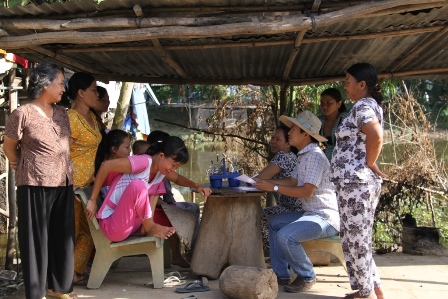Integration of Remote Sensing Data with a Numerical Model to Prepare an Accurate Flood Hazard Map for Effective Flood Management in the Mekong Delta
Descriptions
This project aimed at developing a comprehensive method for flood mapping in the Mekong basin by combining GIS, remote sensing, and a numerical model.
Flooding in the Mekong basin is a recurrent event and floods occur during the rainy season, from July to December.
In this study, the Mike-11, a quasi 2-D model was used in combination with GIS, remote sensing for preparing accurate flood maps for enabling risk-based landuse planning and infrastructure development. Satellite images were used to analyse the flood extents for calibration of the 2-D model. The calibrated model will be useful to predict floods of different return periods. Flood maps of 26 September and 20 October 2010 were prepared by using the model and compare with the flood maps obtained from the satellite data of the same dates. Flood extents were reasonably close between the model simulated and satellite data derived flood maps. However, there were discrepancies in some areas due to insufficient model calibration, non-availability of high-resolution DEM, etc.
Flood damage data were collected from An Giang and Dong Thap provinces focussing on crops (mainly paddy) and residential areas. Paddy areas affected by the flood in 2001 were 3,638 ha and 95,955 ha in the An Giang and Dong Thap provinces respectively. The estimated damages to crops were 806,018,653,138 VND and 30,561,394,735 VND, respectively. The flood inundated approximately 14 km2 and 37 km2 of residential areas in Giang and Dong Thap provinces respectively in 2010 and the corresponding damages to residential areas were estimated to be 2,428,611,734 VND and 5,042,630,131 VND, respectively.

